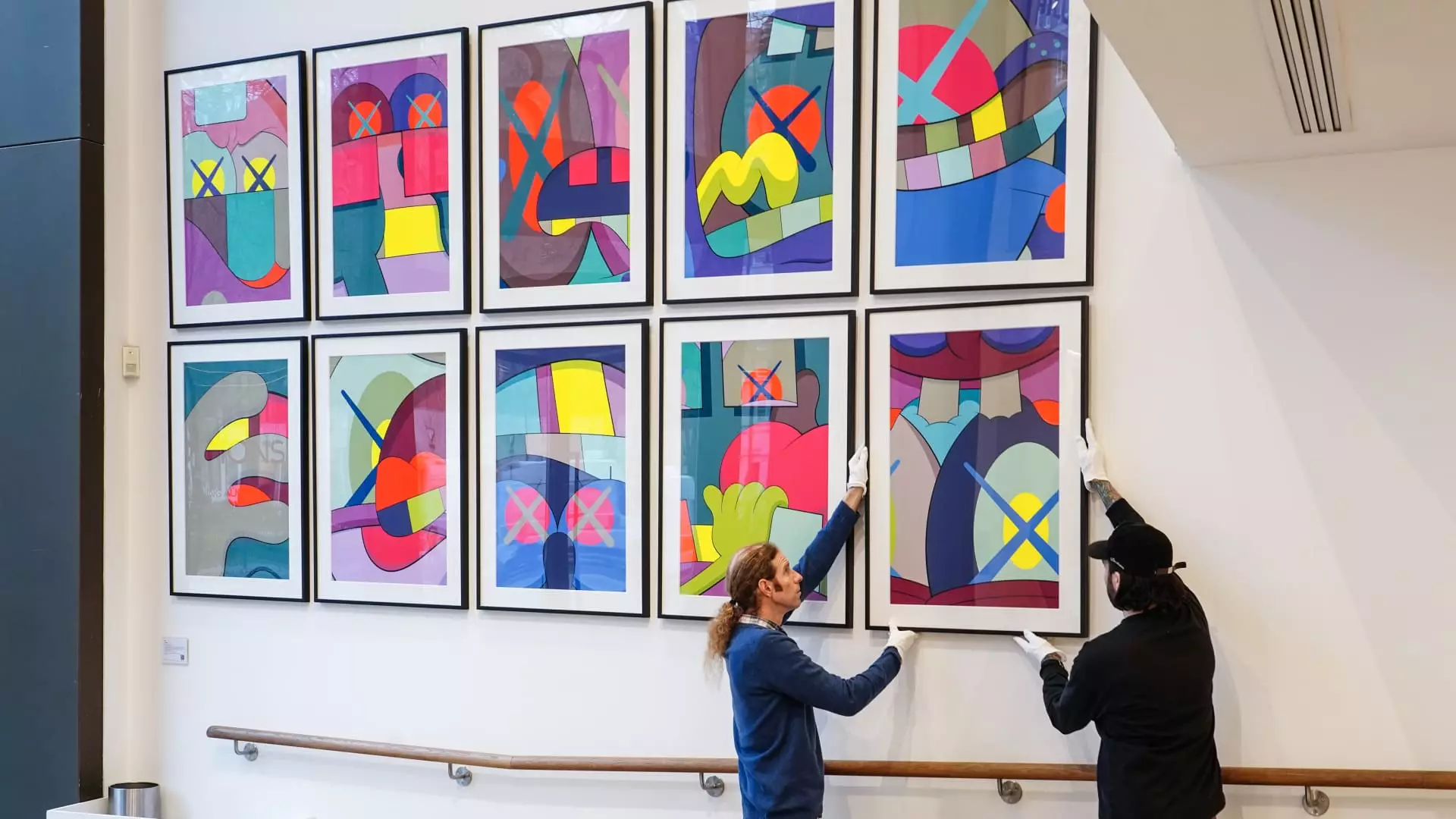In recent years, the persistent decline in art auction sales underscores a sobering reality: the myth of unassailable wealth among the ultra-rich may be cracking. Despite record-high personal fortunes and stock market rallies, the art world faces its most significant downturn in over a decade. This paradox suggests that the outward display of wealth—through luxurious art collections—may no longer serve as a reliable indicator of financial health or social status. Instead, it hints at a deeper, perhaps systemic, divergence between tangible wealth and the investments that historically cement the elite’s cultural footprint.
Such a disparity invites skepticism. The narrative that the wealthy’s fortunes translate smoothly into high-value art remains increasingly tenuous. It raises pertinent questions: Are art markets genuinely reflective of economic prosperity, or are they increasingly disconnected, hollow symbols of a status that is losing its substance? This disconnect highlights a potential fissure in the social fabric, where wealth is abounding in the financial sector but withdrawing from cultural investments like fine art—a phenomenon indicating a possible recalibration of what it means to display and accrue wealth in the 21st century.
The Generational Shift and an Identity Crisis in Art Collecting
The decline in auction revenues isn’t just about economic cycles; it signals an existential shift rooted in generational change. Baby boomers, long the mainstay of art collecting, are aging and their priorities are shifting. Many are downsizing or disposing of extensive collections, often leaving heirs who display little enthusiasm for inherited art. This natural attrition is exacerbated by the fact that Millennials and Generation Z, now inheriting wealth, exhibit fundamentally different values and interests.
Growing up in a digital age, these younger generations are more inclined toward accessibility, instant gratification, and digital-first experiences. Their engagement with art isn’t necessarily through dusty galleries or high-stakes auctions but via online platforms and social media. Their preferences lean toward collectibles and luxury items that blend culture with functionality—think jewelry, sneakers, or limited-edition memorabilia—rather than traditional fine art. The consequence is a shifting landscape where the high-end art market, once the pinnacle of cultural prestige, is increasingly out of step with the new consumer profile.
This generation’s values threaten to reshape not only what kinds of art are valued but also how wealth is expressed and preserved. The emphasis on tangible assets like jewelry and luxury goods—especially among women—points toward a future where symbolic wealth manifests more in shared experiences and accessible collectibles than in sprawling art galleries. Such a pivot could profoundly alter the historical dynamics of the art market, transforming it from an elite enclave into a more democratized and volatile space.
The Illusion of Resilience: Luxury Goods and Digital Adaptation
While traditional art sales falter, the luxury sector—comprising jewelry, watches, vintage wines, and memorabilia—continues to defy the downward trend. The resilience of these markets reveals a different facet of wealth: capital that is more adaptable, mobile, and aligned with contemporary tastes. Jewelry sales have surged by nearly 70% in just a year, driven largely by women who are increasingly wielding influence over the luxury economy.
Furthermore, auction houses are actively reinventing themselves, embracing online sales and digital bidding platforms to stay relevant. The rapid growth of online auctions reflects not only technological progression but also a strategic effort to cater to younger, digitally-native buyers. This shift, however, is a double-edged sword. On one hand, it democratizes access; on the other, it risks commodifying luxury, reducing art and collectibles to transactional objects rather than cultural artifacts.
The frenzy around high-profile sales—the Marie-Therese Pink Diamond, the Mediterranean Blue—demonstrates that wealth can still fetch impressive sums, but only within the rarified corridors of select luxury niches. The real story lies in the increasing demand for more affordable, accessible collectibles. A surge in bids under $50,000 suggests a broader trend: wealth is fragmenting into smaller, more frequent transactions, stripping away the exclusivity that once defined the high art market.
Is the Art Market’s Future a Reflection of Societal Transformation?
Perhaps the most unsettling question is whether these shifts signal a fundamental transformation—or a crisis—that threatens the very foundation of traditional art collecting. The sharp decline at the high end, paired with a modest rise in lower-priced collectibles, indicates a market in flux, struggling to reconcile old paradigms with emerging realities.
This volatility hints at a deeper societal movement. As wealth becomes more dispersed and digital culture permeates everyday life, the old symbols of affluence—prestige art collections—may no longer resonate as they once did. Instead, wealth will manifest in more transient, customizable forms, reflecting a society that values experience, identity, and accessibility over exclusivity.
If this trend persists, it could mean the end of the high-stakes, elitist art market as we know it. Instead, we might see a new model emerge—one that emphasizes culture as an open, evolving phenomenon rather than a rarefied commodity. This transition imperils the traditional art world, forcing it to confront its own obsolescence or reinvent itself entirely to stay relevant in a society increasingly driven by digital innovation and democratized wealth.
In this context, the art market’s decline isn’t merely a cyclical downturn but a symptom of broader cultural and economic reordering—one where the illusions of infinity and unwavering wealth fade, revealing a landscape fraught with complexity, uncertainty, and potential transformation.

